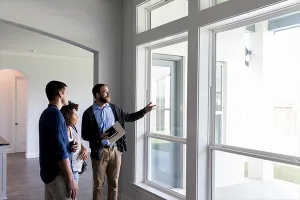
Real estate professionals nationwide have reported that home buyers are increasingly curious about houses’ eco-friendly features. When considering a home’s environmental friendliness, it’s natural to think first of Energy Star appliances and water-saving bathroom fixtures. But outdoor spaces can be sustainable, too.
Decks and patios already offer up to an 80% return on investment for homeowners, according to U.S. News & World Report. Learning to identify eco-friendly patios and balconies can help position you as an expert on the selling points of sustainable housing and, ultimately, help you close sales faster.
Understanding the Value of Green Patios
Eco-friendly patios help preserve resources and protect the environment. Not only does this appeal to today’s buyers—who are increasingly interested in sustainable living—but these features have practical value, too.
Homes with green patios offer several selling points:
- Sustainable patios boost buyers’ perception of the home.
- Sustainable patios with rainwater harvesting reduce water bills.
- Sustainable patios with passive cooling features minimize air conditioning use.
- Sustainable patios extend the livable area of the home without increasing energy costs.
5 Sustainable Patio Design Features to Know
These sustainable patio design ideas can help new builds stand out in crowded markets. They’re also helpful considerations for homeowners who want to renovate or add value to their existing patios. And finally, real estate pros who can identify the practical benefits of these features can help educate buyer clients on the actual value of eco-friendly listings.
Use sustainable materials
The most sustainable materials for any construction or renovation project are those that already exist. In other words, recycle and reuse.
“Existing deck boards may only need to be refreshed and can be brought back to life by sanding and staining or painting them,” says Corey Chetcuti, a designer and project director at Freemodel in Sacramento, Calif. “You can also ask friends, family or neighbors if they have leftover materials from a previous project and put those to use.”
If you can’t find local boards or bricks to reuse, opt for building materials known for their eco-friendliness: reclaimed wood or concrete for flooring and recycled glass for decorative mosaic tilework or inlays in heavy-duty concrete tables or benches.
Install a rainwater harvesting system
Adding a rain barrel is a great way to boost a patio’s eco-friendly factor, as long as it’s not completely sheltered.
Harvesting rainwater can save on water bills because the rainwater can be reused to water plants and for landscaping. But there’s also a potential money-making benefit for seller clients: Ten percent of homeowners saypdf landscaping that integrates energy conservation is “very important” to them. In competitive markets, this green patio feature could attract more buyers, especially if the rain barrel is beautifully integrated into the design of the patio.
Opt for sustainable lighting
Built-in deck lights, string lights, and lanterns, oh my! Beautiful lighting is often the difference between a lackluster patio and an inviting space that homeowners use for gatherings, summer dinners and more.
That said, good lighting is an investment. “Installing LED and solar lights will also help keep energy costs down,” says Chetcuti.
Solar lights work well in most places in the United States, but the U.S. Department of Energy emphasizes that outdoor solar light manufacturers’ estimates on the number of hours the lights will run vary according to outdoor conditions. The department estimates solar light operating times “may vary as much as 30% to 50%” in winter months.
Incorporate passive cooling elements
Many U.S. states have experienced record-breaking heat waves in the last few years. Incorporating passive cooling design into new or renovated patios can make a huge difference in the number of weeks per year that a homeowner can comfortably enjoy the space.
Passive cooling ideas for a patio include:
- Installing retractable awnings to control shade.
- Planting lush foliage around the patio or in pots on the patio helps absorb heat and offers pockets of shade.
- Adding a water feature can help cool the air directly around it.
“Limit the amount of hardscape—patios, paths, driveways—in the landscape,” Chetcuti recommends. “When the hardscape heats up, then it heats up the house, the neighborhood, and beyond. This is called the ‘heat island effect.’ Owners then turn on their air conditioning, which uses energy.”
Get selective about planters and greenery
Homeowners who want to beautify their patio spaces while also cashing in on the benefits of passive cooling should think carefully about which planters and plants they want to use. That may mean opting for plants that don’t use too much water. Another sustainable solution is using planters with water reservoirs, says Ashley Irene, the founder of Heirloom Potager, a boutique design firm creating bespoke gardens.
“The reservoirs allow the plants to drink at their own pace,” she explains. “Selecting high-quality planters with timeless styling in natural elements is also a verty eco-friendly way to transform a patio.” Irene says natural materials, such as stone or terra cotta instead of plastic, also wear well in bad weather conditions, developing a beautiful patina.









